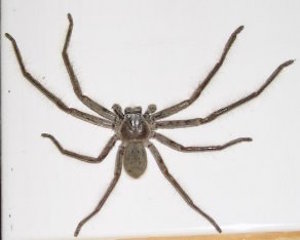READY TO GET STARTED?
REQUEST A FREE ESTIMATE
Fill out the form below or call (888) 466-7849 for a free, no-obligation estimate.
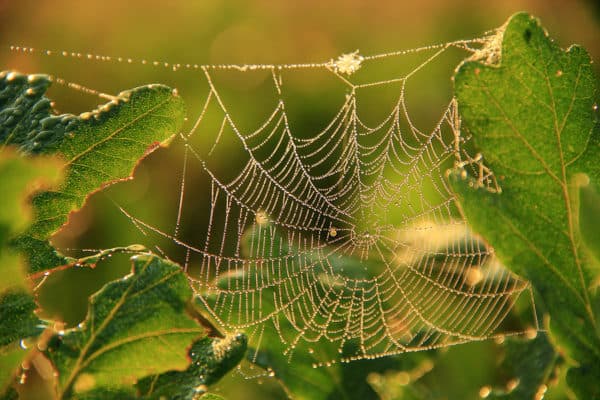
One of the most common questions that arises when a spider is found in a home is “is that spider poisonous?” That’s a trick question. Most spiders are poisonous, yet only a handful are venomous. Poisonous spiders release their toxins when they are inhaled, ingested or absorbed through the tissue or skin; in other words, they’re only harmful if you eat them. Venomous spiders, on the other hand, inject their toxin with a fang-like apparatus known as a chelicerae. These are the spiders you should be worried about and avoid contact with.
While there are more than 20 species of spiders in Georgia, there are only 2 that are known to be dangerous to humans: the black widow and the brown recluse. Like most common spiders, biting humans is a last line of defense. They are more likely to flee, hide, or even play dead rather than bite a human. It takes a long time for a spider to replenish his supply of venom after he injects it. Most will only use this defense mechanism if they have no other choice. Wasting venom on a human can even cause the spider to starve to death before his supply is replenished as he will have no means to kill any prey he catches.
Let’s take a closer look at each of the venomous spider species in Georgia, as well as some general tips to prevent spiders from getting into your home.
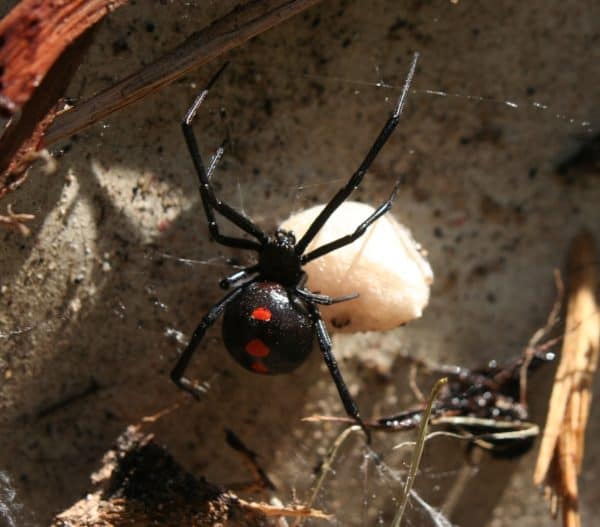
The black widow spider is considered to be the most venomous spider in North America. It is only the female black widow, however, that is dangerous to humans. Black widows are a red and black spider that is usually about 1.5 inches long with a shiny, globular abdomen and a reddish hourglass shape on its underside. While they are mostly black in color, they can sometimes be brown. The venom of a black widow spider is reportedly 15 times stronger than that of a rattlesnake. While black widow bites can be fatal to the young, the elderly, and those with compromised immune systems, most victims suffer no serious or long term damage from the bite. Black widows are not aggressive and bites commonly occur as a result of accidental contact. Common symptoms from a black widow bite include redness, swelling and tenderness at the site of the bite, muscle aches, nausea, and sometimes paralysis of the diaphragm which can cause difficulty breathing.
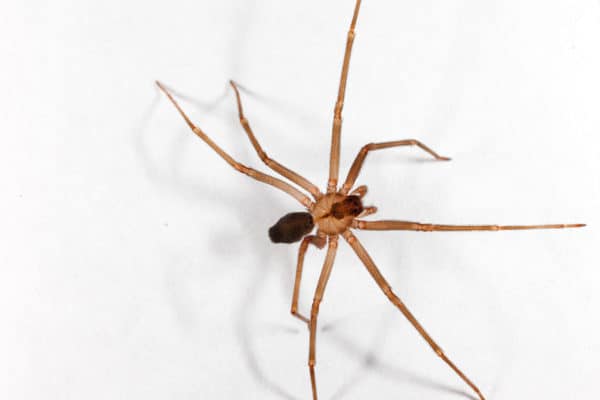
The brown recluse spider is also known as the violin spider or the fiddleback spider. The brown recluse is a light brown spider with a dark, violin-shaped marking on its back with the neck of the violin pointing toward the rear of the spider. They also have a very distinctive eye pattern with a semi-circular arrangement of 6 eyes (3 sets of 2) while most spider species have 8 eyes. Adult brown recluses are about the size of a quarter. They usually live outdoors under rocks, woodpiles, logs, etc. but are also well adapted to living indoors with humans. Once inside they are commonly found in attics, garages, basements, and are even known to wander into shoes, clothing, and bedding. They hunt at night and retreat to dark, secluded places in the daytime. The brown recluse is typically not aggressive and usually only bite when they are inadvertently trapped against human skin (rolling over on them in the bed or slipping your foot into a shoe they have crawled into for hiding). While bites are rare they can cause serious wounds and infections. The majority of bites remain localized, becoming red, swollen and tender at the site of the bite. If left untreated, a necrotic lesion may develop, usually accompanied by a central blister.
Keep your garages, attics, sheds, basements, and other areas that aren’t utilized often clean and clear of clutter. Try to avoid leaving clothing and shoes on the floor and store them in plastic bins if possible. Shake out any clothing that has been left on the floor or in a hamper before wearing or washing.
Seal any cracks and crevices around your home. Spiders can get in through damaged window screens or cracks in your siding. Inspect the outside of your home seasonally and make any repairs necessary.
Inspect any items that are brought from outdoors into your home. This includes any packages delivered to your porch or steps, groceries that may be placed on the driveway or porch as you are unloading, boxes of decorations being brought in from storage, or used appliances that are bought secondhand.
Contact a licensed pest control company if you suspect you have a spider problem. A professional pest control technician can inspect the exterior and interior of your home to help identify any possible entry points, identify the type of spiders and other pests you may be having issues with, and properly, safely, and effectively treat any pest problems they may encounter.
Request a Free Estimate to Get Started.
Avoid Bites and Stings This Summer
The Summer Big Three: Roaches, Mosquitoes, & Termites
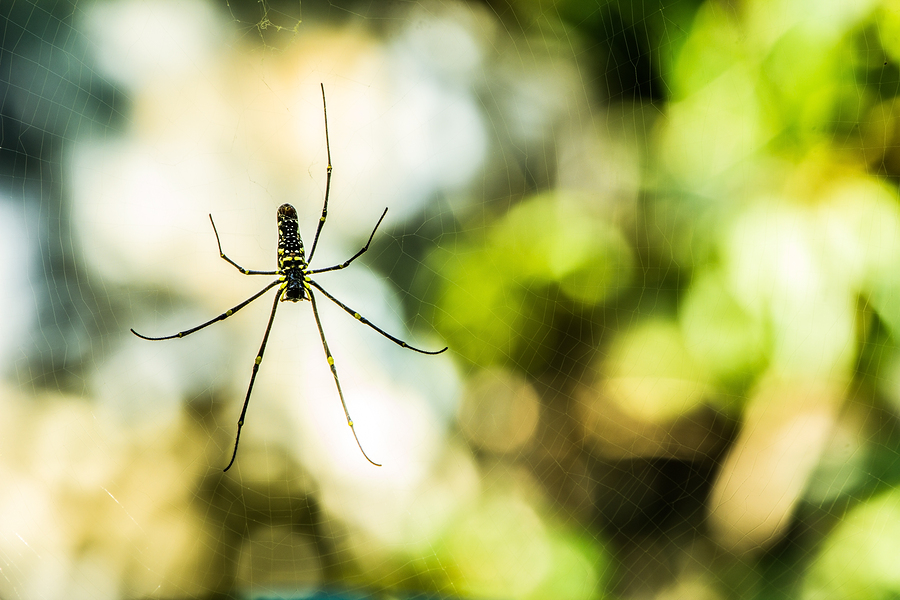
Are the spiders you commonly encounter around your home harmful or harmless? Keep reading to find out which ones you should avoid.
Venom toxicity – the brown recluse venom can cause significant injury with tissue loss and necrosis.
Habitat – brown recluse is found in the United States from the east to the west coast, with predominance in the south.
Spider Identification – an adult spider is 1/4 to 3/4 inch in body – a dark violin shape is located on the top of the leg attachment region with the neck of the violin pointing backward toward the abdomen. Unlike most spiders that have 8 eyes, the brown recluse has 6 eyes arranged in pairs – one pair in front and a pair on either side.
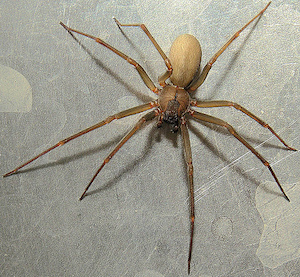
Venom toxicity – the Back Widow Spider can inflict a painful bite which can be fatal, especially to the young and elderly. An effective anti-venom was developed in 1956. Only a small amount of venom can cause serious illness, as the poison attacks the nervous system. Systemic envenomisation usually results in headache, nausea, vomiting, abdominal pain, pyrexia and hypertension. The pain around the bite area can be excruciating or it may go unnoticed. First aid and medical attention should be sought as soon as possible, if bitten. If you have heart condition or other heart problem, you may need hospitalization.
Habitat – prefers woodpiles, rubble piles, under stones, in hollow stumps, sheds and garages. Indoors it can be found in undisturbed, cluttered areas in basements and crawl spaces.
Spider Identification – the body of an adult black widow is about 1/2 inch long. The female black widow is normally shiny black, with a red hourglass marking on the underside of the abdomen. The marking may range in color from yellowish orange to red and its shape may range from an hourglass to a dot.
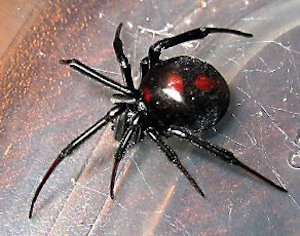
Venom toxicity – although the bite of the hobo spider is initially painless, the bite can be serious. After 24 hours, the bite develops into a blister and after 24-36 hours, the blister breaks open, leaving an open, oozing ulceration. Typically when the venom is injected, the victim will experience an immediate redness, which develops around the bite. The most common reported symptom is severe headache. Other symptoms can include nausea, weakness, fatigue, temporary memory loss and vision impairment. In any case, first aid and medical attention should be sought, if bitten, as and when any adverse health effects are observed.
Habitat – they can be found anywhere in Washington, Oregon, Idaho, Montana, Wyoming, Utah and Colorado. They rarely climb vertical surfaces and are uncommon above basements or ground level.
Spider Identification – they are brown in color and the adults measure roughly 1/3 to 2/3 inch in body length and 2/3 to 2 inches in leg span. Their abdomens have several chevron shaped markings. Males are distinctively different from females in that they have two large palpi (mouth parts) that look like boxing gloves. Females tend to have a larger and rounder abdomen when compared to males.
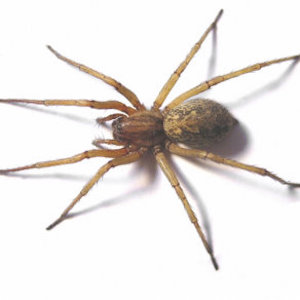
Venom toxicity – the bite of these spiders is of low risk to humans.
Habitat – These spiders are often called grass spiders because they construct their webs in tall grass, heavy ground cover and the branches of thick shrubs. Rarely will a funnel web spider be seen indoors, except for an occasional wandering male. They are found mostly in the Pacific Northwest states.
Spider Identification – are common outdoors and are occasionally found indoors. They are generally brownish or grayish with light and dark stripes near the head. They have long spinnerets and are moderate-sized (3/4 inch long). Grass spiders construct a large sheet web with a funnel they use as a retreat. These webs are commonly built on the ground, around steps, window wells, foundations, and low shrubs.
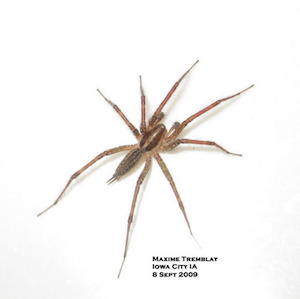
Venom toxicity – known to cause severe illness, especially to young children – similar to Red-Back Spider. Although normally not aggressive, the male mouse spider will bite if provoked, and should be considered dangerous to humans. It has large hard fangs which can cause a deep painful bite. First aid and medical attention (ambulance) should be sought as soon as possible.
Habitat – Mouse spiders are ground dwellers with burrows of more than 3 feet deep. The male often wanders about during the day on open ground, especially after rain, in search of females.
Spider Identification – a medium to large spider of up to 1 and 1/2 inches in body length. The male Mouse Spider often has a bright red head and elongated fangs.
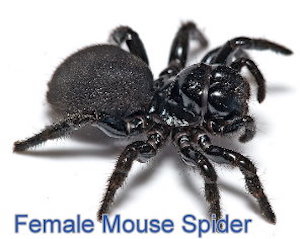
Venom toxicity – the bite of the Black House Spider is poisonous but not lethal. Certain people bitten experience severe pain around the bite site, heavy sweating, muscular pains, vomiting, headaches and giddiness. First aid and medical attention (ambulance) should be sought as soon as possible.
Habitat – this spider spins a lacy, messy web and is prefers dry habitats in secluded locations. It is commonly found in window framing, under eaves, gutters, in brickwork, sheds, toilets and among rocks and bark. Electric lights attract their prey – moths, flies, mosquitoes and other insects.
Spider Identification – adults are about 1/2 inch in body length and of a dark brown to black velvet textured appearance.
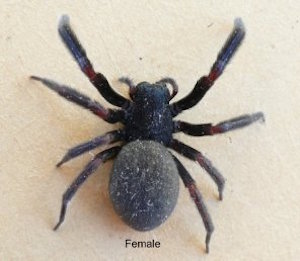
Venom toxicity – the bite of the Wolf Spider is poisonous but not lethal. Although non-aggressive, they bite freely if provoked and should be considered dangerous to humans. The bite may be very painful. First aid and medical attention should be sought as soon as possible, particularly as to children or the elderly.
Habitat – this spider is a ground dweller, with a burrow retreat. It has a roving nocturnal lifestyle to hunt their prey and can move very rapidly when disturbed. Commonly found around the home, in garden areas with a silk lined burrow, sometimes with a lid or covered by leaf litter or grass woven with silk as a little fence around the rim of the burrow.
Spider Identification – an adult is 1/2 inch to more than 1 inch in body length – mottled gray to brown in color, with a distinct Union Jack impression on its back. The female carries it’s young on its back.
Venom toxicity – the bite of the Trap-Door Spider is of low risk (non toxic) to humans. It is a non-aggressive spider – usually timid but may stand up and present it’s fangs if harassed. Rarely bites – but if so it can be painful.
Habitat – this spider is a ground dweller, with a burrow retreat lined with silk of up to 10 inches in depth and around 1 inch in width – prefers nesting in drier exposed locations – often has a wafer-like lid on the burrow entrance. Trap-Door Spiders are commonly found in the drier open ground areas around the home.
Spider Identification – an adult is about 1 and 1/2 inches in body length – brown to dark brown in color – heavily covered with fine hairs. The male has distinct boxing glove-shaped palps, that is, the two “sensory feelers” at front of its head.
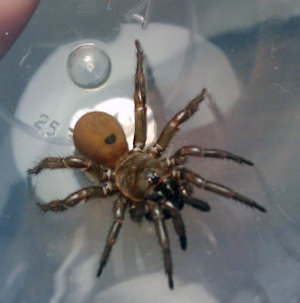
Venom toxicity – the bite of Orb-Weaving Spiders is of low risk (not toxic) to humans. They are a non-aggressive group of spiders. Seldom bite. Be careful not to walk into their webs at night – the fright of this spider crawling over one’s face can be terrifying and may cause a heart attack, particularly to the susceptible over 40 year olds.
Habitat – often found in summer in garden areas around the home – they spin a large circular web of 6 feet or more, often between buildings and shrubs, to snare flying insects, such as, flies and mosquitoes.
Spider Identification – an adult is about 2/3 to more than 1 inch in body length – has a bulbous abdomen – often colorful – dark to light brown pattern. The common Golden Orb-Weaver Spider has a purplish bulbous abdomen with fine hairs.
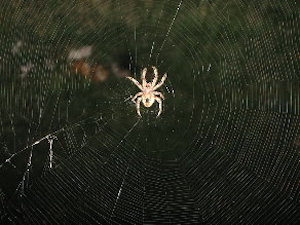
Venom toxicity – the bite of the St Andrews Cross is of low risk (non-toxic) to humans. They are a non-aggressive group of spiders.
Habitat – this spider is a web-weaver usually found in summer in garden areas around the home. It is considered beneficial as it spins a large web to snare flying insects, such as flies and mosquitoes.
Spider Identification – adult 1/4″ to 1/2″ in body length – abdomen striped yellow and brown – as illustrated. The St Andrews Cross Spider usually sits, upside down, in the middle of its web forming a cross.
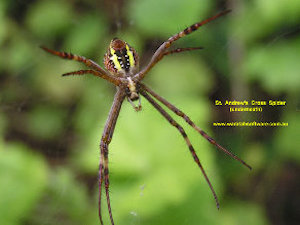
Venom toxicity – the bite of Huntsman Spiders is of low risk (non toxic) to humans. They are a non-aggressive group of spiders. However, a large individual can give a painful bite. Beware in summer when the female Huntsman Spider is guarding her egg sacs or young.
Habitat – a hunter that prefers to live under the flaking bark of trees, under flat rocks and under eaves or within roof spaces of buildings. The Huntsman Spider often wanders into homes and is found perched on a wall. It is a shy, timid spider that can move sideways at lighting-fast speed when disturbed.
Spider Identification – an adult varies greatly around 1/2″ in body length – has long legs – the diameter of an adult including legs may reach 2″ – the first 2 pairs of legs are longer than rear two – it is hairy – buff to beige brown in color, with dark patches on the body.
